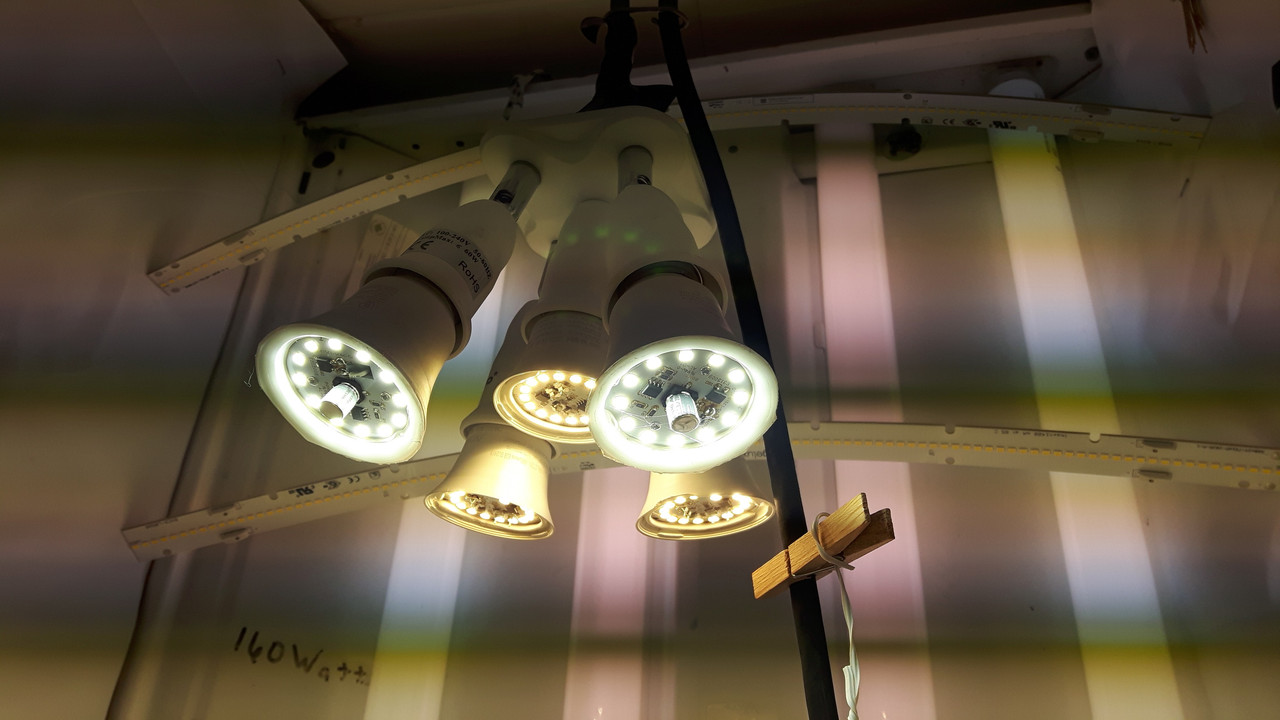PCBuds
Well-known member
As far as running the strips ar lower voltage, I think that is best for your lumen/watt ratings anyway.
It is, but there may not be that many Watts when it's turned down so a lot less total lumen output.
One problem with parallel circuits is that one LED strip can draw more current than another but if I'm turned down I don't think it matters too much.
I can help that by having the same length of wire going to each strip and don't daisy chain them.
If you daisy chain them the first strip sees more voltage (so more current) than the rest of the chain because of the resistance of the copper runs on the strip.
I still have to do the math. I don't know what the voltage is at the max current or how hot it gets without a heatsink.
Bridgelux says their 1' are 1000 lm and 2' 2000 lm.
I assume that's at max.
I briefly looked for info on the lm/current curve of the bridgelux diodes, but couldn't find anything.
The led Gardner noted that Bridgelux doesn't list what LEDs are on its strips but he's almost positive what they are and they are rated 1100 ma not 700 like Bridgelux lists.
The Gardner didn't want to take it past rated max but I've got two spares so maybe I'll mount one to a heat sink and Crank er' up to redline !!
I wanna fire up my closet like a Griswold Christmas !! Lol
That's something that's great about the cree leds, they give good documentation in that regard.
Cree doesn't make LED strips but some strip makers may use Cree LED segments.
Strips are completely under the control of the driver, and the driver of the driver (that would be me).
If Cree knows the exact input voltage (120/240VAC) and they have an onboard driver, they can list more accurate specs.




















